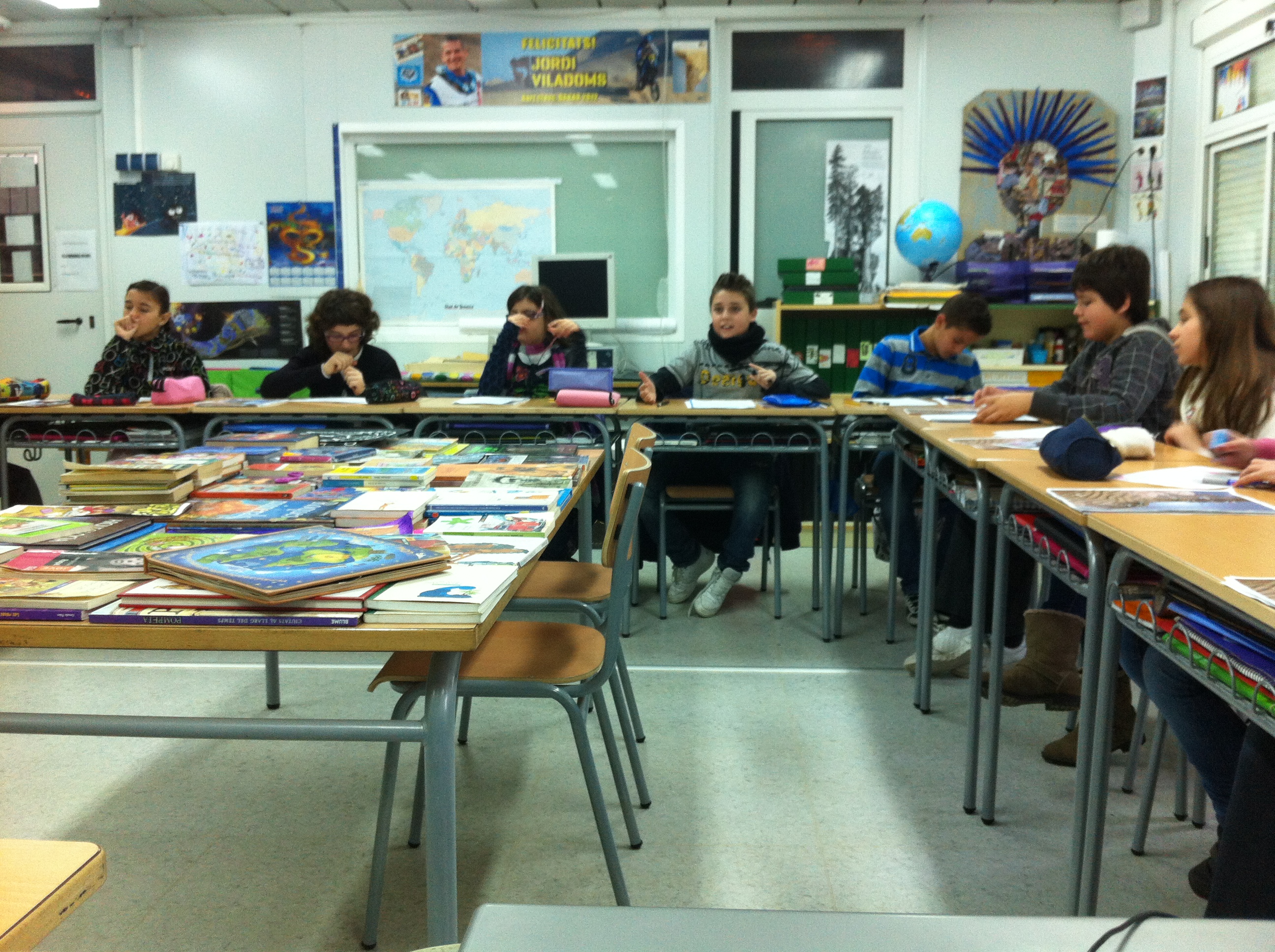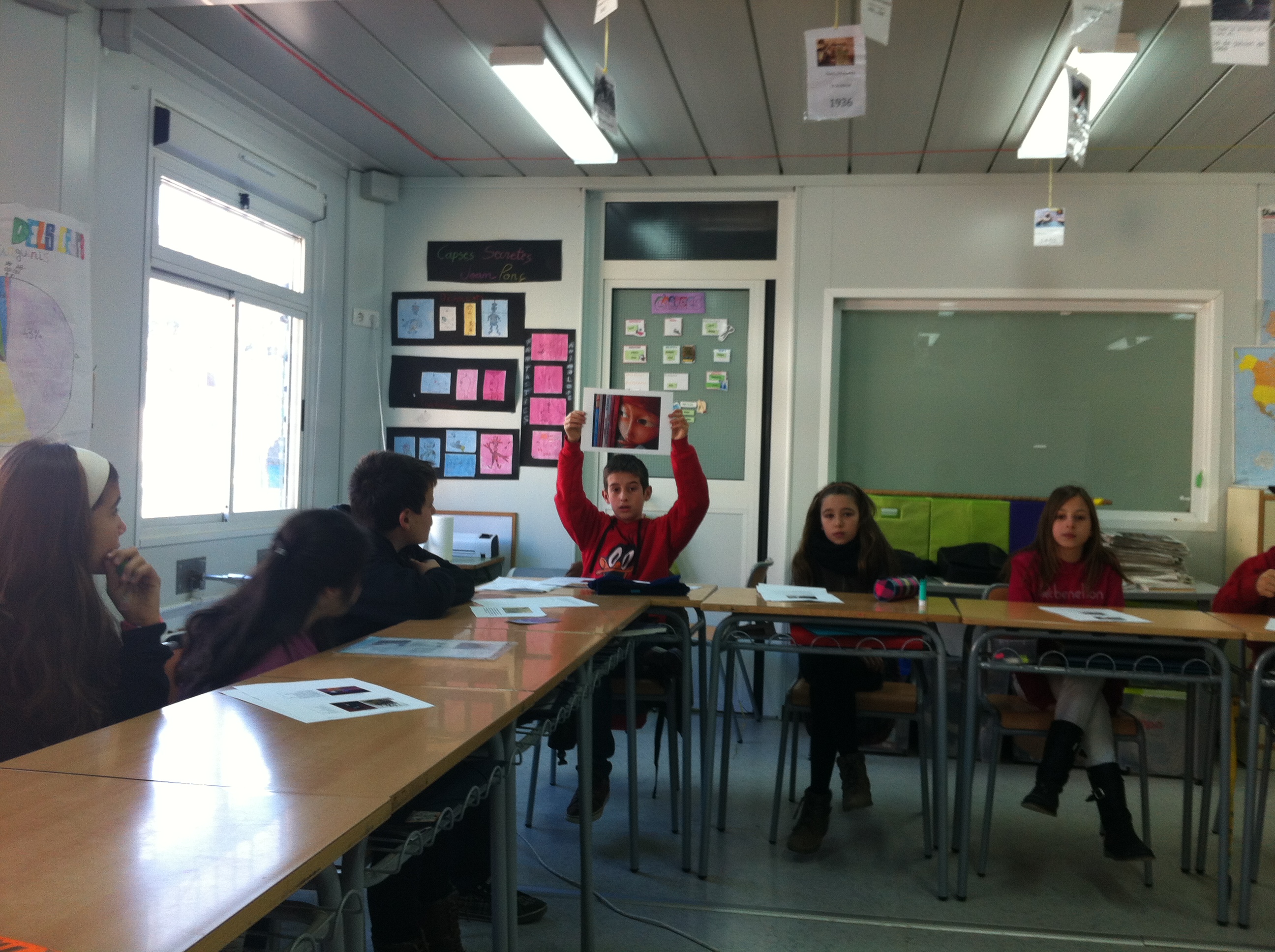Escola Serralavella Primary school - Spain
Region: Ullastrell
The other schools in the Quad Blog: Don National School (Ireland), Colégio do Minho (Portugal), ZS Korunovacni Czech Republic
Creative Connections Project: the current economic crisis linked to the context of the school


Class 6A and 6B. Photo by Sandra Gómez
Context
The Serralavella School is a primary school, located in the city Ullastrell, a small town in the county of Vallès Occidental, close to the Baix Llobregat, with a population of 1,200 inhabitants. Geographically it provides quality of life associated with a small town combined with the proximity of cities such as Terrassa and Martorell. Ullastrell has had a rural past but recent changes have had an impact on the employment and economic activity of the people. Work in the fields has been reduced and replaced with industrial work and services. Many people work outside of the town, but this does not mean that it has become a dormitory town.
Serralavella School follows a pedagogical model of Inquiry Learning through projects. The school is under the Department of Education of the Generalitat of Catalonia. It currently has two age phases: Nursery, children aged 3 to 5 years and Primary Education 1st-6th which consists of children aged 5-12 years.
After years of negotiation, from 2011, the school is now in the process of expansion with the construction of a new building. This expansion is due to population growth in the area and therefore an increase in the number of school age children who need to study in the town.
Participants
In Serralavella two classes participated in the Creative Connections project: The 6thA with 17 students, aged between 11 and 12 years, together with their teacher and 6thB with 15 students from ages between 11 and 12 years with their teacher. Both classes worked with (on a visit once a week throughout the project) a MA student who was studying: Art and Education: a constructionist approach at the University of Barcelona.
Process
The Creative Connections Project was not carried out in the context of a specific subject as both Catalan primary schools participating in the project (Escola Dovella and Escola Serralavella) work with the pedagogical model the Inquiry Learning Projects. With this in mind, Creative Connections was considered as any other learning project and a tool for developing and linked to other class projects. The project was organised in the schools from January 2013 to June 2013.
Both teachers and the Masters student participated in the group monthly meetings. The Masters student followed and helped with the projects of both groups. The project was organised according to the needs of the two classes. Teachers met with the Masters student to solve problems that arose along the way. While they used the Art Database from the Creative Connections project, they also used examples of other artists suggested by the Masters student and also used images from an exhibition they visited: ‘EXPLOSIÓ! El llegat de Pollock‘ (EXPLOSION! Pollock's Legacy) at the Miró Foundation.
The main concern for both classes was the current economic crisis linked to the context of the school. The school was unfinished at the front of the current building. While the unfinished building of the future school would expand the capacity of the school, unfinished section was current evidence of the country’s economic crisis. This was a topic that the children wanted and needed to work with. The Creative Connections project was planned and it was agreed that it would be very useful to demonstrate the current situation of the school. Therefore it was decided the conclusion of the work would have a physical place and it would be right in front of the unfinished construction.
The visit to the exhibition on Pollock’s legacy in the Miró Foundation, was a starting point for the work. The teachers thought that this exhibition would help them to think how they could create something in front of the school, but that did not happen. Students did not connect on materially with the works, but it was a point of contact with contemporary art.
In the group meetings with the teachers and researchers involved in the CC project, the images in the Art Database website were discussed, and both the teachers of Serralavella saw an opportunity in using it, as they thought that students would have the opportunity to express artistically their social criticism of the society.
In case of the 6th B, along with the teacher, the topics of interest were many:
- economic conflict cuts to health
- the attack on the Catalan language
- animal abuse and pollution of the planet
In the case of the 6th B, the teacher found a common topic to work with; the unfinished school.
During the process, up to the completion of final work, the Masters student’s intervention in both groups was a great help. She anticipated that in the first activities, in designing the future art work, there was too much literalness, and it would be necessary to go beyond this to where the students could include metaphors and feelings in their creations. The teachers noticed the same thing. To change this, the Masters’ student showed the pupils a series of surrealist paintings and Street Art which used metaphor in making meaning. These viewings opened up some possibilities of rethinking their final works for the students and required them to go beyond pure literal representation.
Following these interventions, the teachers also changed their strategies; for instance one teacher asked his students to make a collage with images that were associated with their topics of interest. He then asked them to modify these images with a second layer, with writing and drawing symbols on, so they could realize their connection to these images. In the other class, however, the students conducted a series of individual works that broke with literalism. Some students created works that were full of negative criticism, in relation to these the Masters student showed them that they too could criticise in a positive way, which would help them to rethink their works.
Finally one class created a large mural, in the unfinished building, with a series of metaphors, against the current policies that are being done to fight the economic crisis. The class collectively performed an installation of a cemetery which criticised everything which was lost with the crisis.
Achievement
The Serralavella School has a pedagogical model that allowed students to learn according to their interests and needs. Carrying out the Creative Connections project in this school as an external project was not possible. They had to adapt the project to their needs, which sometimes they found difficult to manage, but eventually they found in the project an opportunity to confront the social problem that the school had and in the process learn the possibilities that art can give in breaking with the literal.


